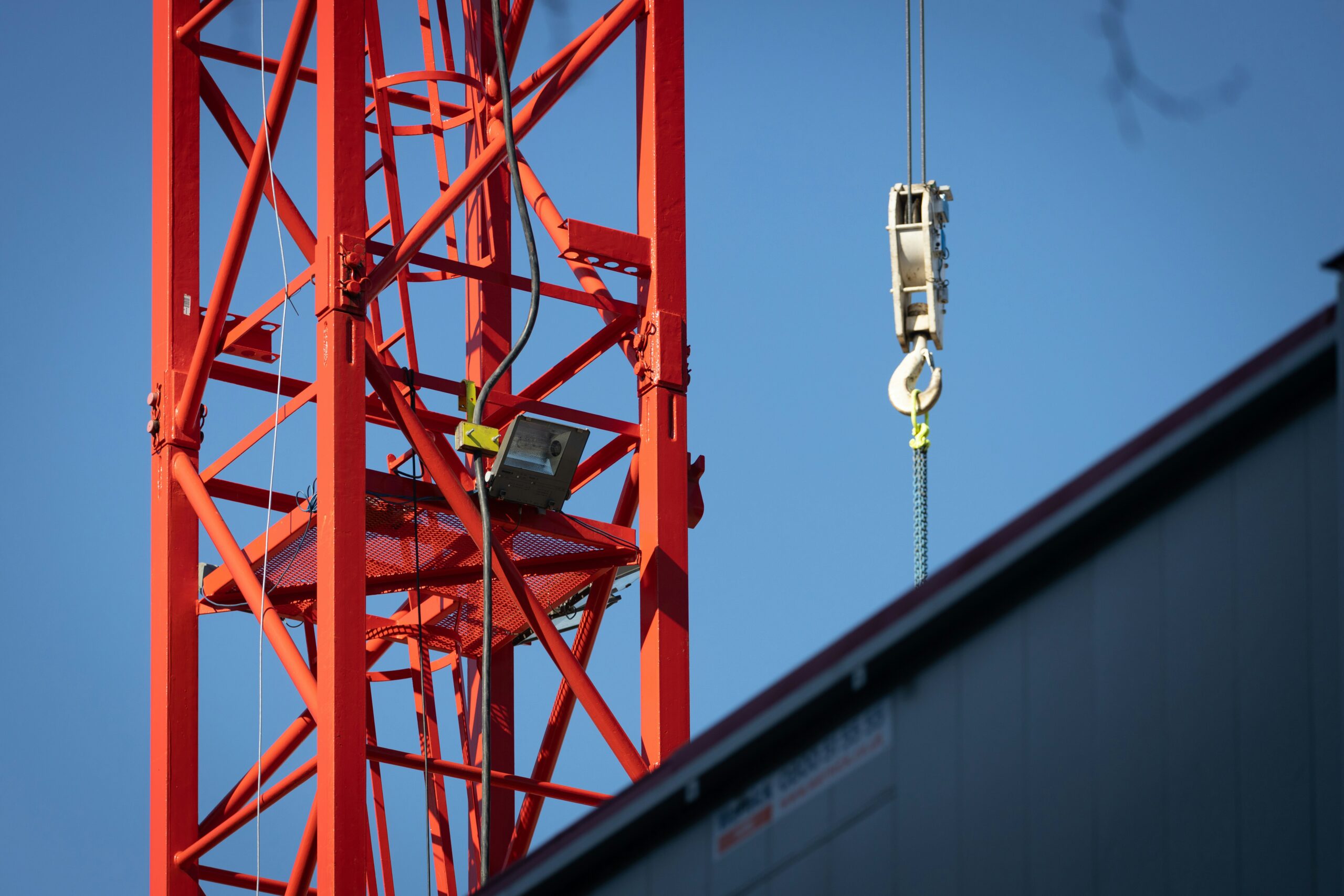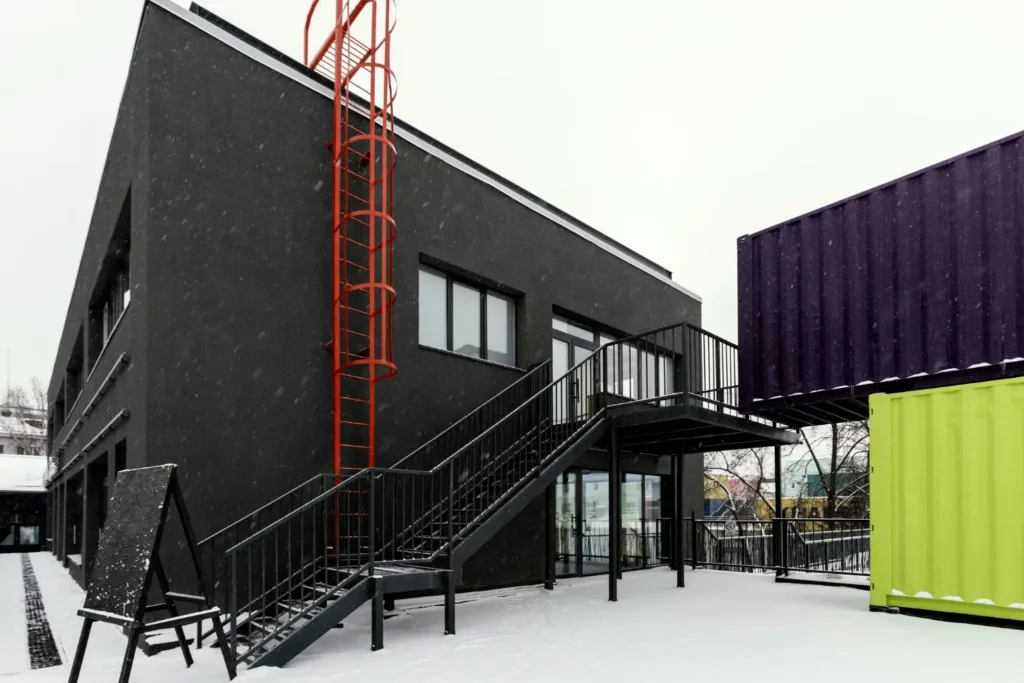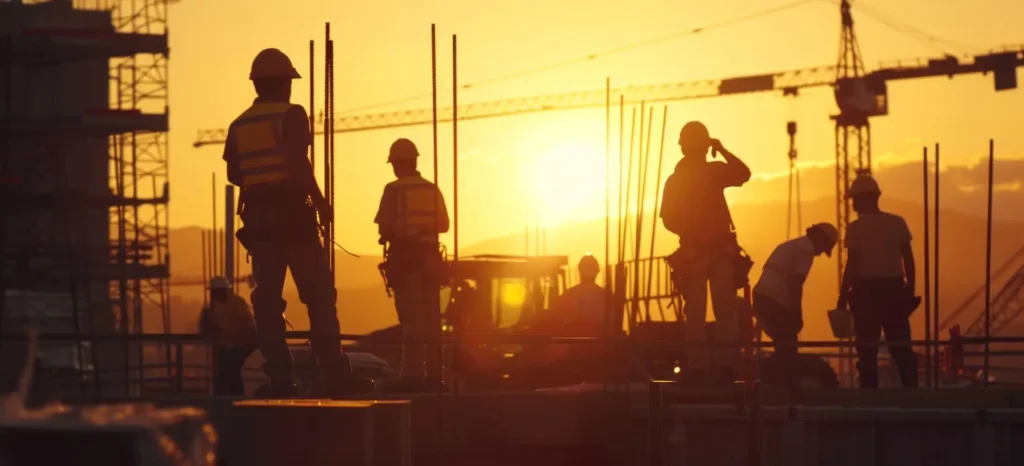Comparing Steel Erection to Other Construction Methods
Introduction to Construction Methods There are several foundational approaches to construction, each bringing its own set of advantages and applications, reflective of technological advancements and material innovations over time. Traditional wood framing stands as a time-honored method, predominantly used in residential structures. Its popularity stems from its cost-effectiveness and ease of modification or expansion. However, it is important to note that wood framing is highly susceptible to environmental conditions and pest damage, which can affect its longevity and durability. In contrast, concrete construction offers superior strength and durability, making it ideal for large-scale and heavy-duty projects such as commercial buildings, bridges, and roadways. Concrete’s versatility extends to its ability to be molded into various shapes and forms, contributing to its widespread application in architectural designs. Reinforced concrete further enhances its load-bearing capacity, proving indispensable for complex engineering requirements. With the advent of technology, prefabrication has revolutionized the construction industry by promoting efficiency and reducing project timelines. Prefabrication involves manufacturing building components off-site under controlled conditions, which are then transported to the construction site for assembly. This method minimizes on-site labor and waste, while ensuring precision and quality control, making it particularly useful for repetitive and scalable projects such as modular homes and commercial spaces. Steel erection, another pivotal construction method, has gained significant traction due to its unmatched strength, flexibility, and sustainability. Steel structures are favored for their ability to support large spans and heavy loads without the need for intermediate supports, allowing for open and adaptable spaces. The inherent recyclability of steel also aligns with modern sustainable building practices, making it a preferred choice for eco-conscious projects. The evolution of construction methods illustrates the critical importance of selecting appropriate techniques for specific project requirements. Factors such as building dimensions, intended use, environmental impact, and budget all play influential roles in determining the best-suited construction method. Understanding these diverse approaches and their unique benefits ensures informed decision-making and optimal outcomes in the building industry. Overview of Steel Erection Steel erection is a critical phase in the construction industry that involves assembling steel components to form the structural framework of buildings, bridges, and other infrastructures. This method dates back to the late 19th century during the Industrial Revolution when advancements in steel production made the material more widely available. Over time, steel erection has evolved significantly, leveraging modern technology and refined techniques to improve efficiency and safety. The process of steel erection is generally divided into several phases. The preparation phase involves the meticulous planning and layout of the site, ensuring that all materials, tools, and personnel are in place before the assembly begins. During this stage, drawings and plans are reviewed to anticipate any challenges that may arise. The next phase is the assembly of steel components, where various sections like beams, columns, and trusses are brought together. This is followed by the lifting phase, where cranes play a crucial role in hoisting these heavy elements into their designated positions. The advancement of crane technology has been instrumental in making this process more efficient and safer, allowing for the erection of increasingly complex structures. The final phase involves bolting and welding, which ensures that all components are securely connected. Bolting provides a temporary means to hold elements in place, while welding offers a permanent solution by melting and fusing pieces together. Throughout these steps, strict safety measures are enforced to protect the workers involved and mitigate risks. Steel erectors, responsible for executing these tasks, operate under stringent guidelines to maintain high standards of safety and precision. In terms of equipment, steel erection relies heavily on cranes, welding machines, and various hand tools. Safety gear, such as harnesses, helmets, and gloves, is also indispensable in preventing injuries. All these elements combined illustrate the complexity and importance of steel erection within the broader construction landscape. Advantages of Steel Erection Steel erection presents a myriad of advantages that distinguish it from other construction methods, primarily stemming from its inherent strength, durability, speed of construction, and flexibility in design. These benefits collectively make steel an appealing choice for a variety of projects, particularly those with demanding structural requirements. Firstly, the strength of steel is unparalleled. Known for its high strength-to-weight ratio, steel allows for the construction of taller and more robust structures without the need for excessively thick supporting walls. This attribute is especially crucial in the erection of skyscrapers where the material needs to support significant loads without becoming overly cumbersome. Durability is another hallmark of steel erection. Unlike wood, which can warp, rot, or be prone to pest infestation, steel withstands extreme environmental conditions with minimal deterioration over time. This resistance to fire, moisture, and pests extends the lifespan of steel buildings, ensuring long-term sustainability with reduced maintenance costs. The speed of construction is a noticeable advantage, as steel components are pre-engineered and fabricated off-site. This prefabrication process streamlines on-site assembly, significantly reducing construction timelines compared to traditional methods using concrete or masonry. Projects benefit from this efficiency, further decreasing labor costs and the overall disruption to the surrounding area. Regarding design flexibility, steel’s versatility allows architects and engineers to create innovative and intricate structures that would be challenging to achieve with other materials. The malleability of steel means it can be molded into various shapes and spans, accommodating a wide array of design specifications and aesthetic preferences. Examples of projects where steel erection is particularly beneficial include skyscrapers and industrial buildings. The Burj Khalifa in Dubai, currently the tallest building in the world, showcases the use of steel to achieve its extraordinary height. Similarly, industrial structures, such as large warehouses and manufacturing plants, often rely on steel for their expansive, open floor plans and the ability to support heavy machinery. Comparing Construction Speeds One of the key differentiators in modern construction practices is the speed at which a project can be completed. When comparing steel erection to other construction methods, it becomes evident that timelines can vary significantly based on several factors. Steel erection, often characterized by its precision and
Innovative Technologies in Steel Erection

Innovative Technologies in Steel Erection Steel erection plays a crucial role in modern construction, serving as the backbone for a multitude of structures, from towering skyscrapers to expansive industrial complexes. This specialized process involves the assembly of steel components to create a structural framework that supports a building or infrastructure project. Traditionally, steel erection relied heavily on manual labor and rudimentary tools. Steel erectors would use cranes, hoists, and scaffolding to position and secure steel beams, columns, and girders. Precision, safety, and coordination were paramount, given the significant risks associated with handling heavy steel elements at considerable heights. The importance of steel erection in the construction industry cannot be overstated. Steel offers unmatched strength, durability, and flexibility, making it an ideal material for building resilient structures that can withstand various environmental stresses. Its versatility allows for innovative architectural designs, enabling the creation of complex and aesthetically pleasing buildings. Moreover, steel’s recyclability aligns with sustainable construction practices, further emphasizing its significance in contemporary engineering. Despite the effectiveness of traditional methods, the field of steel erection has witnessed significant advancements over the years. These innovations aim to enhance efficiency, safety, and precision in the erection process. Emerging technologies, such as Building Information Modeling (BIM), automated machinery, and advanced safety equipment, are revolutionizing how steel structures are assembled. These advancements not only streamline operations but also minimize human error and reduce the potential for accidents on construction sites. As we explore these innovative technologies in detail, it is essential to understand the foundational aspects of steel erection. By examining both the conventional practices and the transformative innovations, we can appreciate the progress made in this critical field. The following sections will delve into specific technologies and their impact on the efficiency and safety of steel erection processes, shedding light on the future of this indispensable construction practice. Challenges in Traditional Steel Erection Traditional steel erection processes have long been a cornerstone of the construction industry. However, these methods come with a myriad of challenges that underscore the need for innovative solutions. One of the primary issues is the labor-intensive nature of traditional steel erection. This process often requires a significant workforce, which not only increases labor costs but also introduces variability in quality and efficiency. Skilled steel erectors are essential, yet the availability of such specialized labor can be limited, further complicating project timelines and budgets. Safety is another critical concern in conventional steel erection practices. The nature of the work involves handling heavy steel components, often at considerable heights, which poses substantial risks to workers. Despite stringent safety protocols, the potential for accidents remains high, leading to injuries, fatalities, and associated financial liabilities. These safety concerns necessitate continuous monitoring and training, which can be both time-consuming and costly. Time constraints are also a significant challenge in traditional steel erection. Projects often face tight deadlines, and any delays in the erection process can have a cascading effect on the overall construction schedule. Factors such as adverse weather conditions, logistical issues in material delivery, and on-site complications can all contribute to project delays. These time overruns not only affect the project’s completion but also increase costs, making the entire process less efficient. Cost overruns are a common issue in conventional steel erection methods. The combination of high labor costs, safety measures, and potential project delays contribute to the overall expense. Additionally, the reliance on manual processes can result in inefficiencies and errors, further driving up costs. The financial unpredictability of traditional steel erection practices makes it challenging for project managers to stay within budget, emphasizing the need for more reliable and cost-effective solutions. Automation and Robotics in Steel Erection The integration of automation and robotics in steel erection represents a significant leap forward in the construction industry. By utilizing advanced technologies such as robotic arms, drones, and automated machinery, steel erectors can achieve a higher level of precision and efficiency in their projects. These innovations not only enhance the accuracy of steel placement but also improve overall safety and reduce labor costs. Robotic arms are particularly beneficial in steel erection. They can handle heavy steel components with ease, positioning them accurately and consistently. This reduces the margin of error and speeds up the erection process. For instance, robotic welders can perform precise welds, ensuring structural integrity while minimizing human error. The use of such technology also mitigates the risks associated with manual welding, such as exposure to hazardous fumes and the potential for burns and injuries. Drones have also found a crucial role in the steel erection process. They are used for site inspections, surveying, and monitoring progress. Drones can quickly and accurately map out construction sites, providing real-time data that helps in planning and decision-making. This aerial perspective allows for better coordination and ensures that steel components are placed correctly, further enhancing the precision of the erection process. Additionally, drones can access hard-to-reach areas, improving safety by reducing the need for workers to perform dangerous tasks at height. Automated machinery, such as CNC machines and automated loaders, streamlines the fabrication and transportation of steel components. These machines can cut, shape, and assemble steel with remarkable accuracy, ensuring that each piece fits perfectly. Automated loaders can then transport these components efficiently, reducing downtime and labor costs. Several construction projects have successfully implemented these technologies, demonstrating their benefits. For example, large-scale infrastructure projects have seen reduced construction times and improved safety records due to the adoption of automation and robotics in steel erection. As these technologies continue to evolve, their impact on the construction industry is expected to grow, driving further advancements in efficiency and safety. 3D Modeling and BIM (Building Information Modeling) The advent of 3D modeling and Building Information Modeling (BIM) marks a transformative era in the realm of steel erection. BIM operates on the principle of creating detailed digital representations of physical and functional characteristics of structures. By leveraging this technology, steel erectors can develop comprehensive models that encapsulate every minute detail of a steel structure, from individual beams to complex
Steel Erection for Commercial vs. Residential Buildings: Key Differences and Considerations

Steel erection is a critical phase in construction, requiring precision and expertise. However, weather conditions can significantly impact these projects, influencing everything from safety to timelines and costs. Understanding these impacts is crucial for planning and executing successful steel erection projects.
The Impact of Weather on Steel Erection Projects

Steel erection is a critical phase in construction, requiring precision and expertise. However, weather conditions can significantly impact these projects, influencing everything from safety to timelines and costs. Understanding these impacts is crucial for planning and executing successful steel erection projects.
Case Study: Successful Steel Erection Projects by Leading Steel Erectors
Case Study: Successful Steel Erection Projects by Leading Steel Erectors Steel erection is a critical part of construction that requires precision, expertise, and coordination. Here, we highlight three notable projects executed by leading steel erection companies, showcasing their commitment to quality, safety, and efficiency. 1. Skyline Tower, Chicago, Illinois Project Overview: The Skyline Tower in Chicago, Illinois, is a testament to modern engineering and architectural excellence. Standing tall amidst the city’s iconic skyline, this project required meticulous planning and execution. Challenges: Height and Scale: Erecting steel at such heights demanded advanced equipment and highly skilled personnel. Urban Environment: Working in a bustling urban area required strict adherence to safety protocols and minimal disruption to the surroundings. Erector: Chicago Steel Construction Company Approach: Chicago Steel Construction Company utilized state-of-the-art cranes and rigging systems to handle the steel components, ensuring precision in alignment and bolting. Their team worked in close coordination with other contractors to maintain the project timeline and quality standards. Results: The successful completion of the Skyline Tower has added a stunning new structure to Chicago’s skyline, showcasing their ability to handle complex, large-scale projects in urban settings. 2. Riverfront Convention Center, San Antonio, Texas Project Overview: The Riverfront Convention Center in San Antonio, Texas, required a robust steel framework to support its expansive structure and accommodate large crowds. Challenges: Complex Design: The architectural design included unique angles and expansive open spaces, requiring precise steel fabrication and erection. Environmental Considerations: Proximity to the river necessitated measures to prevent any environmental impact during construction. Erector: Texas Structural Steel Inc. Approach: Texas Structural Steel Inc. employed advanced 3D modeling software to plan the steel erection sequence, ensuring each piece fit perfectly. Environmental protection measures were strictly implemented, minimizing any potential impacts on the river. Results: The convention center now serves as a premier venue in San Antonio, with its structural integrity and aesthetic appeal standing as a testament to their expertise in steel erection. 3. Coastal Office Park, Miami, Florida Project Overview: The Coastal Office Park in Miami, Florida, involved the construction of multiple office buildings designed to withstand the region’s unique environmental challenges. Challenges: Hurricane Resistance: The structures needed to meet stringent building codes to resist hurricane-force winds. Corrosion Prevention: Proximity to the coast required special treatments to prevent steel corrosion. Erector: Florida Steel Erectors Approach: Florida Steel Erectors selected high-strength, corrosion-resistant steel and applied protective coatings to ensure longevity. The steel erection was carefully sequenced to ensure structural stability at every stage, meeting all safety and regulatory requirements. Results: The Coastal Office Park now offers resilient and durable office spaces, contributing to Miami’s economic growth and showcasing their ability to deliver high-quality steel structures in challenging environments. Conclusion These case studies highlight the ability of top steel erection companies to overcome diverse challenges, delivering projects that stand the test of time. Their commitment to safety, precision, and quality ensures that each structure built is a testament to engineering excellence.
Pre-engineered Steel Buildings – Benefit
Pre-engineered steel buildings – benefits Pre-engineered steel buildings have seen more and more popularity in recent years, due to the benefits these provide over their conventional building counterparts. Here are some of the key components that set pre-engineered steel buildings apart from their usual competitors. Strength and durability – Pre-engineered steel buildings are built with galvanized steel, which is much stronger than other materials commonly used in construction. Time and money savings – Building with pre-engineered steel is quick and cost-effective, which can translate into significant savings in time and money over conventional construction methods. Quality and sustainability – The material used to construct the pre-engineered steel frame is specially engineered to resist corrosion and degradation over time, making it extremely durable and reliable. Versatility and design flexibility – The simple design of pre-engineered steel structures makes them easy to integrate into a variety of layouts and configurations for a variety of applications. As such, there is no doubt the benefits of pre-engineered steel buildings, make them a very attractive option for anyone looking for an alternative to more conventional building materials. Building codes require certain levels of insulation to achieve energy efficiency, which can usually be achieved through the use of supplemental insulation applied to the outside of the structure. With these benefits, We at Reliable Steel Erectors chose the erection of pre-engineered metal buildings when it comes to our clients, to guarantee satisfaction and excellent results. Since we pursue the erection of Reliable, Durable, and Safe Steel Buildings. Facebook Twitter LinkedIn
Steel Erection – The Process Overview
Steel Erection Process – Quick Summary Steel Erection is the process of erecting steel materials into structures. Steel erection is a highly-skilled, technical process that requires specialized training and experience to execute successfully. The usual beginnings of the procedure start with the laying down of the foundation using mixed concrete. The foundation is then cured together with the placement of anchor bolts, these serve as guides for the vertical columns Once the structure has been laid out, the vertical columns are then placed one by one onto the anchor bolts and then bolted together to form the structural steel framework of the building, this along with rafters above to form a four point structure. The purlins will then be installed on the rafters to make the roof structure. And horizontal columns will be installed on the vertical columns to complete the steel structure, this comes along with girths in between that also allows gaps for windows or doors. Finishing touches includes adding the metal walls, windows, doors, and insulation for the metal structure depending on the design. Although the process sounds simple through explanation, the procedure needs properly trained individuals to ensure safety when it comes to steel erection. to know more about “The Risks of Steel Erection” read more about it through this link. Facebook Twitter LinkedIn
ColdForm Steel and Red Iron Steel
Cold-Formed Steel and Red Iron Steel Cold steel is a steel structure that we use in the assembly of steel projects. The process of making cold formed steel material goes through a series of several factory machines, unlike Red Iron Steel, Cold Form is smaller in size, making it ideal for residential or private use, but can also be another option commercially. Cold-formed steel members are produced from standard sheets that are produced in C-profiles and other types by turning the steel through a die. No heat is needed to create the shapes, so it is called cold steel. The different types of metals available fall into many different structural and non-structural categories. Red Iron Steel, on the other hand, varies greatly in size and has a red iron color. It is ideally used commercially. Red iron structures are stronger than their traditional steel counterparts, making them a good choice in parts of the country with extreme weather conditions. The integrated I-beam system allows these structures to withstand high winds and heavy snow without damaging the structure or endangering the roofs. In fact, this iron oxide coating gives red steel buildings advantages: Although steel buildings can take decades to start rusting, red paint can prevent corrosion even longer. This feature alone can seal the deal, at least for a long-term investment. Facebook Twitter LinkedIn
Why Choose Steel Erectors
Why choose Steel Erectors Steel Erectors are a type of construction practice that involves the use of heavy steel frames to build structures, such as steel buildings. Such that there are a number of reasons why you might need to use steel erectors in your next construction project. Steel erectors can be used for a variety of different construction projects, and are designed to ensure that they can be applied to a wide variety of environments and situations. What are the benefits of opting for steel erectors? · Workers can avoid the risk of falling from height when erecting steel structures with the use of advance equipment. · Using advanced equipment means that workers can construct large buildings with minimal disruption. · The speed of construction can be increased through the use of modern equipment and practices · Reduced site disruption during construction – The assembly and disassembly of equipment occur outside of the site boundary, which means there are no interruptions to the day-to-day activities. Worker safety is a major consideration when it comes to any construction project, and the use of structural steel erectors can help to reduce this risk significantly. Another main benefit is the erection speed that can be achieved with modern techniques along with the zeroes risks for working of up to 30 meters. The removal of individual pieces with a crane makes the loading of the truck simpler and faster. Loads of material are broken down and removed from the ground or scaffolding and the truck is reloaded fast. The use of a telescopic boom also allows vertical movement with great precision, with practically no weight on the truck. Less time is needed than with traditional on-site assembly methods and in general, there is very little downtime to associated with project execution as the construction time is kept to a minimum due to the speed of project erection. Once the structure is completed, the assembly time is also drastically reduced as very part is ready to use onsite. Some savings can be made by being able to reduce the number of man-hours required to complete the project as well. As such, Steel Erection, when it comes to steel structures, has more benefits than the standard on-site project development. Making it more efficient in terms of speed, cost, and safety. Facebook Twitter LinkedIn
Reliable Steel Erectors: A View into the Insulation We Use
Partner spotlight : A View into the insulation we use The Simple Saver System™ is a high performance insulation and finishing system designed for roof and walls in low rise commercial buildings. Simple Saver System features OSHA compliant Fall ProtectionThe Simple Saver System has been manufactured and marketed through Thermal Design over the past 30 years and has become the #1 specified high R-value insulation system for metal buildings. In addition to superior insulation performance compared to “traditional” methods, the Simple Saver System is a liner system that provides through fall protection anywhere on the roof that it is properly installed, according to Thermal Design’s Instructions. This fall protection is not limited to the leading edge during the installation and roofing process. We invite you to learn more about the concept of the Simple Saver System and why it may be the perfect fit for your next building. Source: https://bit.ly/3d8X3gl Facebook Twitter LinkedIn
